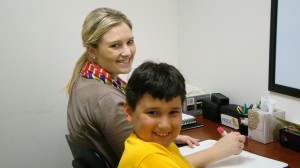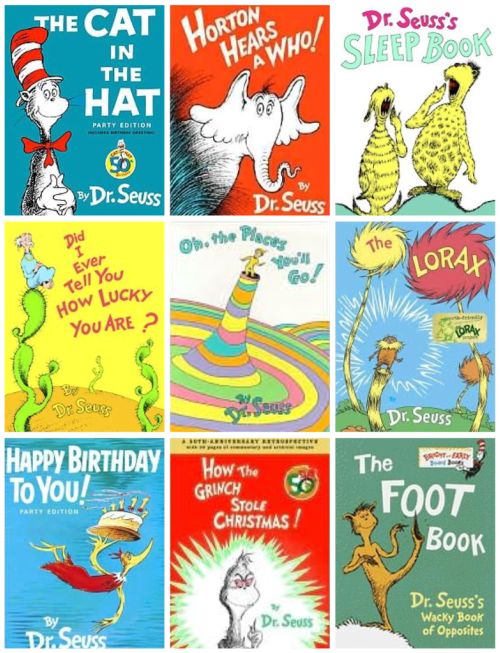
by PRIDE Reading Program Admin | Feb 9, 2015 | A PRIDE Post, Reading Comprehension
You can help your child improve their reading comprehension by just doing this one really easy activity. It will take about 20 minutes each day for a few weeks. Be sure to approach it lightly and make it a fun, bonding and motivating activity.
Here is what you do:
- Explain to your child that predicting is making guesses about what will come next in the text you are reading. You should make predictions often when you read. Start with the title and ask your child what he or she thinks the story will be about. Pause and stop frequently as you read, discuss if your predictions were correct, and make new predictions.
- If your child is having troubles with predictions, model the process for him or her by making your own predictions. You can simply say, “I am going to make predictions while I read this book. I am going to start with the title.” Explain what you think will happen.
- Make predictions collaboratively with your child. Suggest that from a certain section on you want him or her to make predictions with you. You should both stop and think about what might happen next and then discuss your thoughts together.
- After much guided practice, it is time to let your child read silently without your help. Remind your child to be sure to make predictions often and to check as he or she reads to see whether the predication came true.
Make sure as you are reading together with your child that you pay careful attention to the level and demand of the text. When children are first learning reading comprehension strategies, they should encounter texts that do not make heavy demands in terms of extensive background knowledge, complex vocabulary, or unknown decoding skills.
Also, the level of motivation that your child has towards the text will impact whether and how he or she will use comprehension strategies. Best is to allow your child to pick out their own reading material that excites, motivates and interests him or her.

Karina Richland, M.A. is the Founder of PRIDE Learning Centers, located in Los Angeles and Orange County. Ms. Richland is a certified reading and learning disability specialist. Ms. Richland speaks frequently to parents, teachers, and professionals on learning differences, and writes for several journals and publications. You can visit the PRIDE Learning Center website at: www.pridelearningcenter.com

by PRIDE Reading Program Admin | Jul 8, 2014 | A PRIDE Post, Autism, Reading Comprehension
Reading comprehension help for students with autism may requires a few strategies that YOU the parent or teacher can easily do at home or in the classroom. Studies consistently show that children who are encouraged to use visual imagery have improved performance on tests of comprehension and recall of materials. For many children with autism, this skill of using mental imagery in text is an extremely challenging task. Nevertheless, this method can be taught and mastered.
Reading Comprehension help for students with autism involves VISUALIZATION. This is one of the most effective ways to help improve reading comprehension in a child with autism. How do you teach this? Well …. try to encourage the child to form mental pictures of the events described in the stories read.
TEACHING VISUALIZATION…
An autistic child struggling with reading comprehension will benefit from a teaching method geared to make sure that he understands and thinks about word meaning as he reads and that provides a specific scheme for visualizing. For example, a teacher might stop a student after reading a few lines and encourage the student to form a mental picture with a question such as “what do you think that looked like?” This allows the student to build imagery directly related to the concepts conveyed in the reading and at the same time to continue to focus on the printed symbols on the page.
- Use prior knowledge and pre-reading strategies. “Look at the title. Think about what the story might be about.”
- For stories, the student can visualize what is happening at the beginning, middle, and end of the story. “Read or listen to the first few sentences. Remember to get a picture in your head for each sentence. Do not continue until you get a moving picture in your head, kind of like a movie.”
- For informational text, student can think about key words and visualize the content they are learning. “Read or listen to this paragraph. Remember to get a picture for each sentence. Ask me if you do not understand a word.”
- Students should be asked to explain their images. “Can you describe what you see as you are reading.”
- Students should compare the picture in their minds with what they are reading. “Tell me as much information as you can remember.””
Integrating the child’s own artwork with story reading, such as having the child draw a map or diagram of events, or represent the story in cartoon form, is also useful. They can also read an entire passage and then create an illustration that represents the main idea of the paragraph. To help the child decide which ideas are most important, provide them with some guidelines: “If this story were to be made into a movie, which scenes absolutely must be included for the story to make sense. Which scenes would be funny, sad, etc.”?
Reading Comprehension help for students with autism involves your help and guidance in teaching visualization strategies. Good Luck – and let us know how they worked!
__________________________________________________________________________________________________

Karina Richland, M.A. is the Founder of PRIDE Learning Centers, located in Los Angeles and Orange County. Ms. Richland is a reading and learning disability specialist and speaks frequently to parents, teachers, and professionals on learning differences. You can reach her by email at karina@pridelearningcenter.com or visit the PRIDE Learning Center website at: www.pridelearningcenter.com

by PRIDE Reading Program Admin | Jan 1, 2012 | Reading Comprehension
Our reading comprehension program helps students who
- Can’t remember or understand what they just read
- Have difficulty keeping track of details and sequence
- Struggle with getting the main idea and making predictions and inferences
At PRIDE Learning Center, reading comprehension is taught one-on-one by our credentialed reading specialists. PRIDE teachers are able to teach students how to both draw meaning from text and to verbally express their understanding of it.
Our highly effective reading comprehension program provides students with the ability to conceptualize mental images that match content, and use language to describe those images. This is what we call visualization. Starting at a concrete level and moving towards more abstract concepts, we are able to help students visualize the content of what they are reading. This method is highly successful in improving reading comprehension as well as memory retention.
At PRIDE Learning Center, we’ll help your child master these important reading comprehension strategies:
- Become an active reader and have goals in mind while working through text
- Make predictions about what is to come
- Look over the structure of the text to determine which sections to read carefully and which to read quickly, which not to read, and so on.
- Construct, Revise and Question the meanings while reading
- Determine meaning of unfamiliar words and concepts in text
- Feel a sense of satisfaction and productivity after reading a text
- VISUALIZATION – making pictures in our minds as we read!
For more information, call (866) 774-3342








